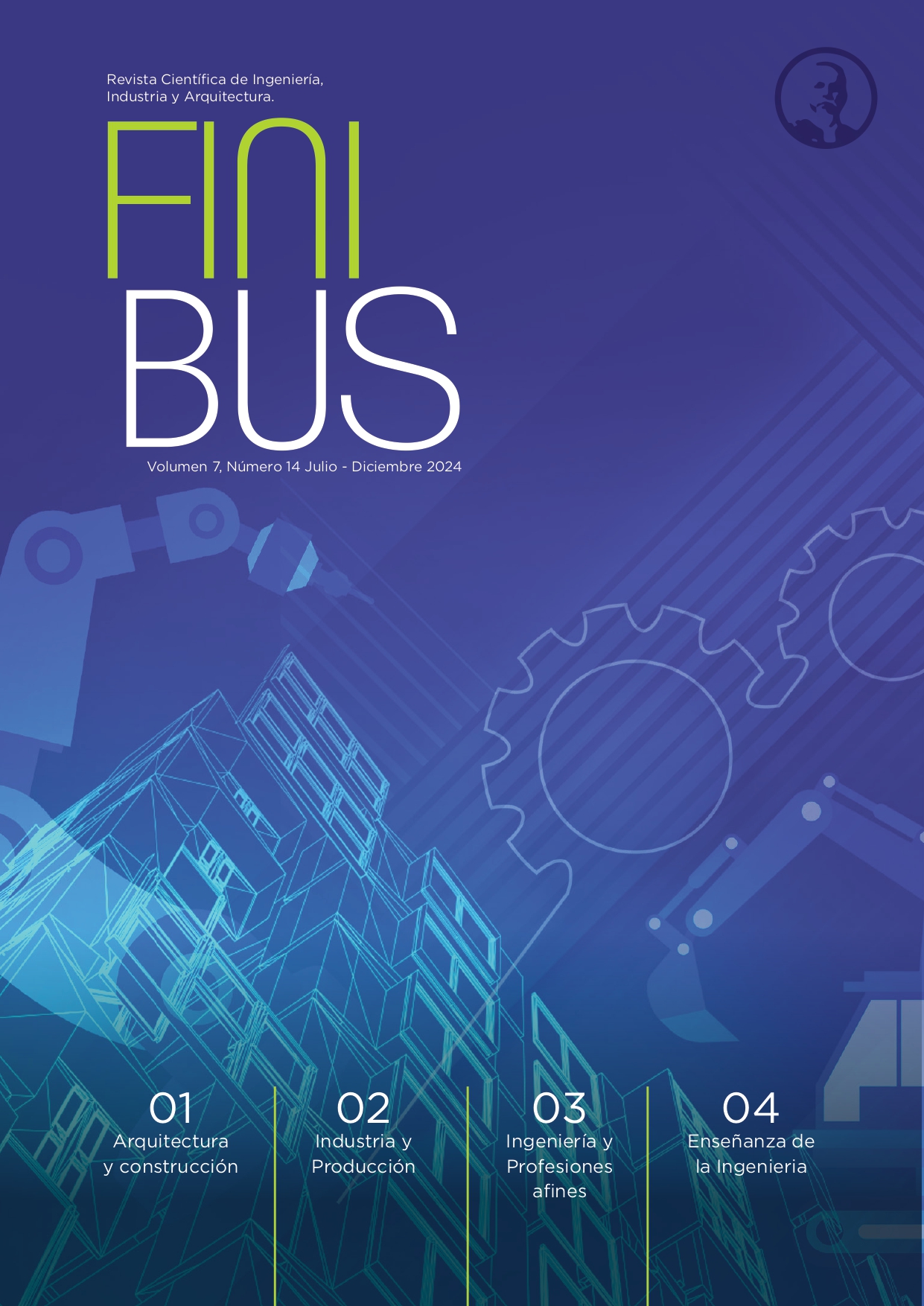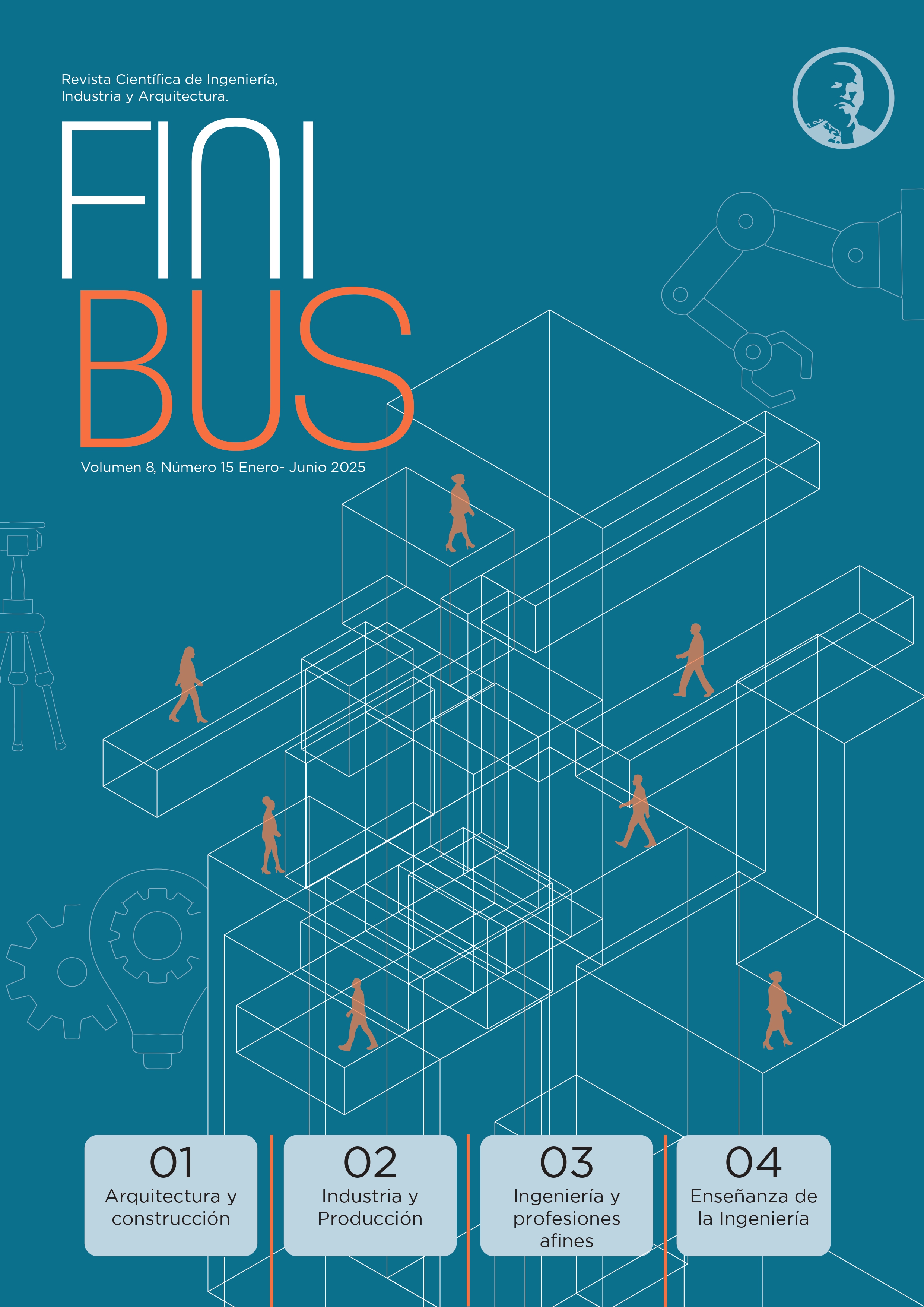ANALYSIS OF THE INCIDENCE OF TEMPERATURE DURING DOUBLE CLOSING IN THE METAL CONTAINER 307 OF THE FR 400 SEAMER
Analysis of the incidence of temperature during double sealing on the metal container 307 of the FR 400 Closer
DOI:
https://doi.org/10.56124/finibus.v7i14.007Keywords:
Can Seamer Machine, double sealing, tooling, metal containers, temperature.Abstract
The food packaging industry is constantly facing the challenge of ensuring quality and safety of the products. One of the crucial aspects to ensure a good condition of the container and its content is the double closure process, which is the application of two hermetic sealers on the metal container. Temperature is a critical factor that can influence the success of the double-sealing process. Variations in temperature during this process can have negative consequences, such as low sealing quality, reduced packaged product life span, and, in extreme cases, food contamination and spoilage. This research focuses on the incidence of temperature during the double sealing process in metal container 307 using the FR 400 seaming machine. The results indicate that the adequate sealing of a product means the perfect condition and the right temperature of the room where the process is performed because it can directly affect the deformation of the material. Inaccurate sealing can negatively influence product freshness, flavor, texture, as well as consumer experience. Therefore, regulating and minimizing temperature changes during the sealing of metal containers is necessary, especially in the food sector, where product quality and safety are essential.
Downloads
References
Barbosa-Cánovas, G. V., Juliano, P., Peleg, M., & Swanson, B. G. (2003). Conservación de alimentos con campos eléctricos pulsados. Academic Press.
Brody, A. L., & Lord, J. B. (2008). Desarrollando nuevos productos alimenticios para un mercado cambiante. CRC Press.
Desrosier, N. W., & Singh, R. P. (2012). Procesos de conservación de alimentos. Springer Science & Business Media.
FAO. (2019). Reducción de pérdidas y desperdicios de alimentos. Organización de las Naciones Unidas para la Alimentación y la Agricultura. https://www.fao.org/reducing-food-loss-waste/en/
Gould, G. W. (2011). Nuevos métodos de conservación de alimentos. Springer.
Goyal, M. R., & Prakash, A. (2020). Ingeniería de procesos alimentarios. Apple Academic Press.
Hickman, M. (2016). Enlatado y conservación para principiantes. John Wiley & Sons.
Jones, A., White, R., & Black, S. (2020). Efectos de la temperatura en el sellado de latas metálicas. Revista de Empaque de Alimentos, 12(3), 145-158. https://doi.org/10.1234/jfp.v12i3.2345
Lee, D. S., & Yam, K. L. (2009). Ciencia y tecnología del empaque de alimentos. CRC Press.
Mero, J. (2013). Principios de procesamiento térmico en el empaque de alimentos. Revista de Ingeniería de Alimentos, 19(2), 88-102. https://doi.org/10.5678/fej.v19i2.4321
Pérez, J. A. (2014). Tecnología de conservación de alimentos: Principios y aplicaciones. Editorial Universitaria.
Pérez, J., Falcón, R., & Domínguez, M. (2021). Historia y evolución del enlatado de alimentos. Revista de Tecnología Alimentaria, 15(3), 45-58.
Robertson, G. L. (2012). Empaque de alimentos: Principios y práctica. CRC Press.
Rodríguez, A. (2019). Innovaciones en el envasado de alimentos: Del siglo XIX al XXI. Journal of Packaging Science, 22(2), 98-112.
Smith, J., & Brown, L. (2019). El papel de la temperatura en la integridad del empaque metálico. Revista Internacional de Ciencia del Empaque, 8(2), 99-112. https://doi.org/10.5678/ijps.v8i2.876
Toledo, R. T. (2007). Fundamentos de la ingeniería de procesos alimentarios. Springer Science & Business Media.
Viteri, C. G. (2021). Impacto de la temperatura en el sellado hermético de envases metálicos. Revista Técnica de Empaque y Conservación de Alimentos, 14(3), 98-112.
World Health Organization. (2015). Estimaciones de la OMS sobre la carga global de las enfermedades transmitidas por alimentos. Organización Mundial de la Salud. https://www.who.int/publications/i/item/9789241565165
Published
How to Cite
Issue
Section
License
Copyright (c) 2024 Revista Científica y Arbitrada del Observatorio Territorial, Artes y Arquitectura: FINIBUS - ISSN: 2737-6451.

This work is licensed under a Creative Commons Attribution-NonCommercial-ShareAlike 4.0 International License.















